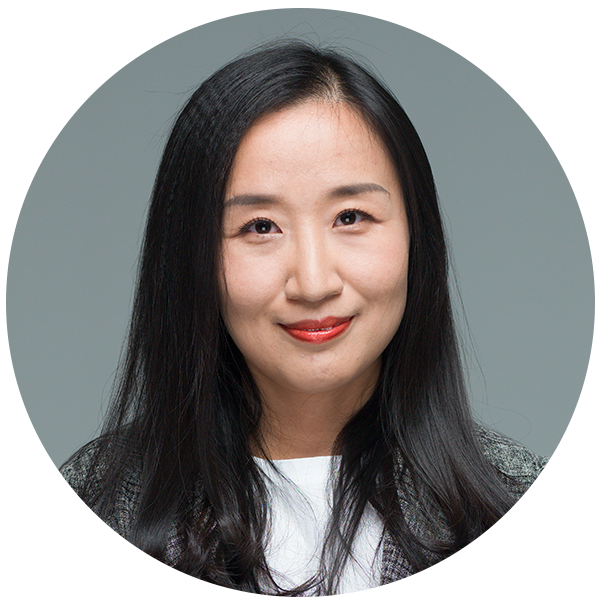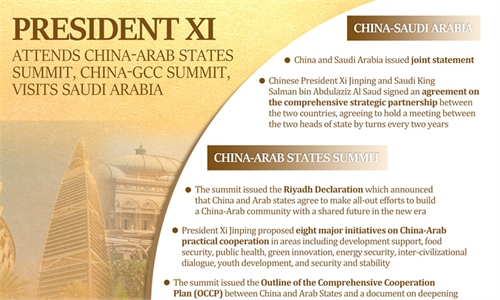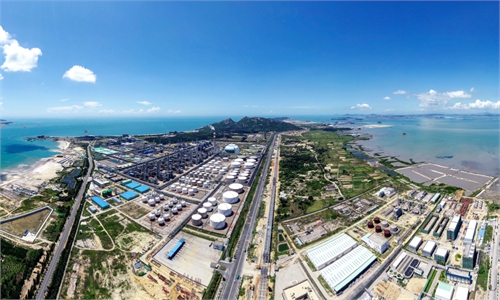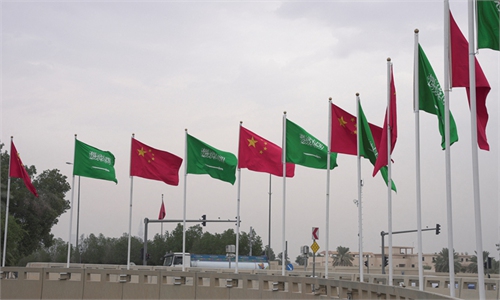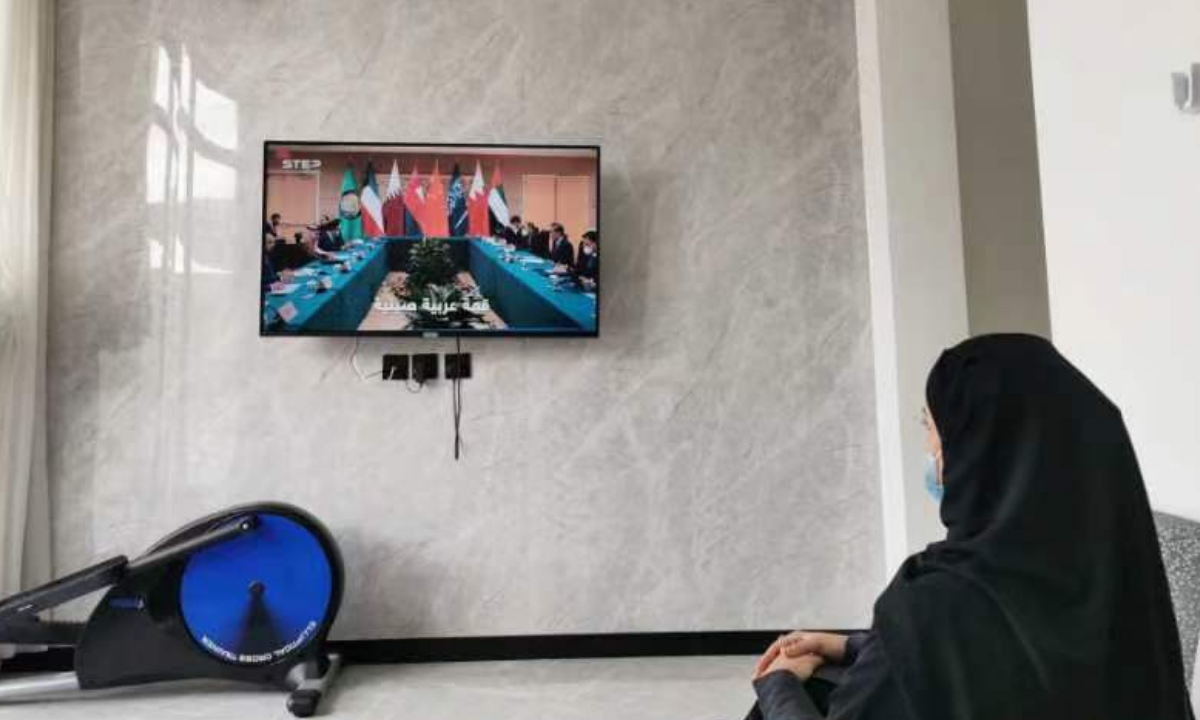
Nada Saad Hussain Al Sulaiman watches news related to Chinese President Xi Jinping's trip to Saudi Arabia at her home. Photo: Yu Jincui/GT
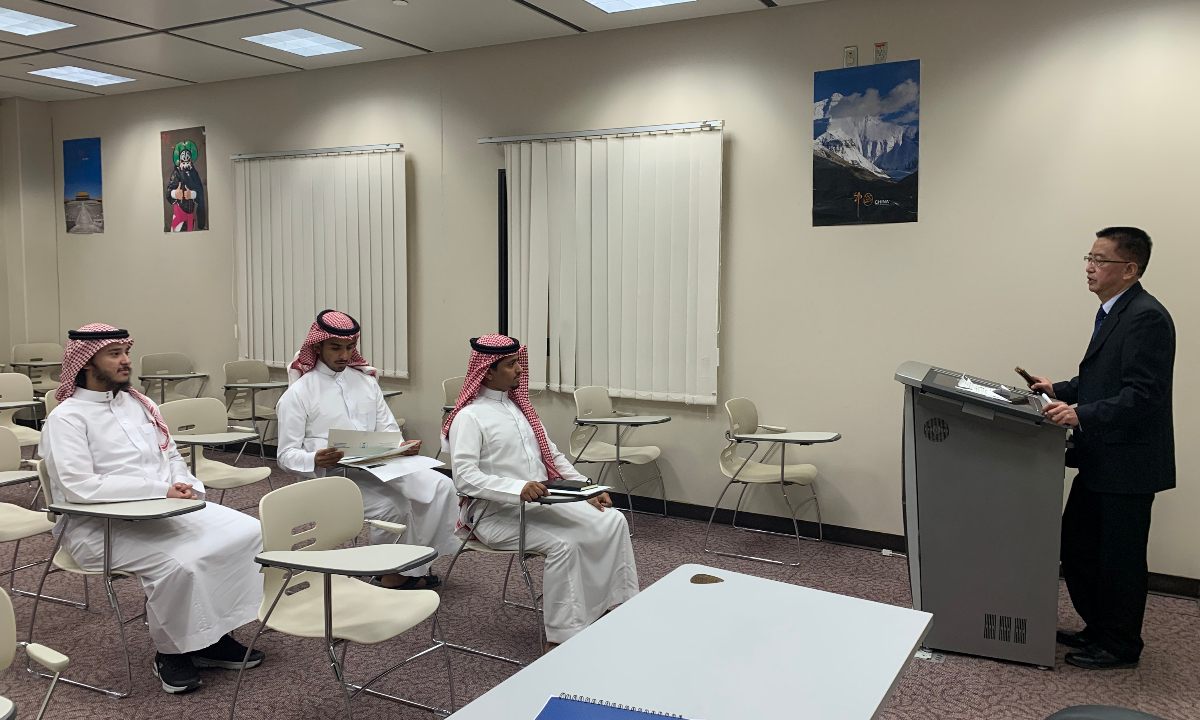
Some Saudi students at the Riyadh-based King Saud University take Chinese language class. Photo: Xing Xiaojing/GT
On the afternoon of December 8, we visited Nada Saad Hussain Al Sulaiman, a sophomore majoring in business Chinese at Princess Nora bint Abdul Rahman University. Nada's home is located in the northeastern suburb of Riyadh, capital of Saudi Arabia. Before we arrived there, she, her husband Turki Abudullah and their three children had prepared Arabic coffee and special homemade refreshment to receive us.
Nada is one of co-authors of a collective letter to Chinese President Xi Jinping spontaneously organized by a group of young Chinese learners and enthusiasts. She used to teach English at an international school. But after a Chinese-learning fever emerged in Saudi Arabia following the decision of Saudi Crown Prince Mohammed bin Salman bin Abdulaziz to include the Chinese language in the curriculum at all stages of schools and universities in the Gulf kingdom in 2019, Nada decided to "seize the opportunity."
She told us that many daily necessities in her life are made in China. In Nada's home, "Chinese elements" can be seen everywhere. Certificate of award she won in Chinese language competition in Saudi Arabia and a Chinese poem written by her in Chinese characters are displayed in the living room as decorations. A large pile of Chinese books can be found on the table, and her young daughter can easily count one to 10 in Chinese.
The most prominently, the house is full of made-in-China products: TCL TV, GREE air conditioners, Huawei cellphones, Haier washing machineand various made-in-China kids' clothes. "Do you use this because you are learning Chinese?" we asked. Her husband immediately replied "No," noting it's not because their family is special, but in fact, many Saudi families are like theirs. "We cannot imagine the life without made-in-China products," he said.
We also went to Huawei Flagship Store Riyadh Front, its largest flagship store overseas.The stylishly designed outlet is more than 2,000 square meters in size, enabling visitors to experience the latest offerings of Huawei's smart devices and technologies in 5G, artificial intelligence, and the cloud.
When we arrived there, although it was 9 pm, many locals were selecting products. A man named Atti told us he is a Huawei fan and his cellphone has been used for five years without any problem occurring. He was picking a new model simply because he thought the one he was using was old-fashioned. Atti also told us besides cellphone, there are also many made-in-China products including refrigerator and air conditioner in his house and the reason he chose made-in-China products is because of the reasonable prices, high quality and good after-sales service.
As we observed, unnoticed products such as the simultaneous interpretation earphones at the news conference after the China-Arab States Summit and China-GCC summit, the fabrics of camping tents and the Saudi men's headdress are also from China. Besides made-in-China products, Chinese constructions are also affecting the lives of the Saudi people. Chinese enterprises have participated in the Mecca light rail, the project of Yanbu Aramco Sinopec Refining Company (YASREF) and the project of Neom, a city being built in Tabuk Province in northwestern Saudi Arabia and others.
Made-in-China projects and Chinese constructions are becoming the first impression people in the Middle East have of China. They not only have met the needs of people's lives and work, but also facilitated life and lead the consumption trend. Now made-in-China products have become indispensable to the lives of ordinary Arab people. The biggest contribution of made-in-China products is that they have brought an affordable modern life to people in the Middle East and all over the world, an affordable modern life that they can get through their own hard work.
The process is peaceful. The more tangible benefits that made-in-China and China'sconstructions bring to local people, the more popular the China-proposed concept of win-win development and cooperation will become in the region.
From the perspective of the Middle East, as life of people in the region become better and more stable, their confidence in exploring a development path based on their own national conditions will grow. In this sense, it shows that it's impossible for the US to squeeze Chinese manufacturing out of the global market.
After the end of the Cold War, for a quite long time, the US played a dominating role in the Middle East. But realities show that US' attempt to implant Western-style so-called freedom and democracy in the region can only bring trouble and war. In contrast, with made-in-China products and Chinese constructions, China has left an impression on local societies that China is a symbol of development and peace. In front of China's approach that emphasizes development and US approach that forcibly imposes Western-style democracies on the Middle East countries, it's easy to tell which one will prevail.
The authors are reporters with the Global Times. opinion@globaltimes.com.cn
